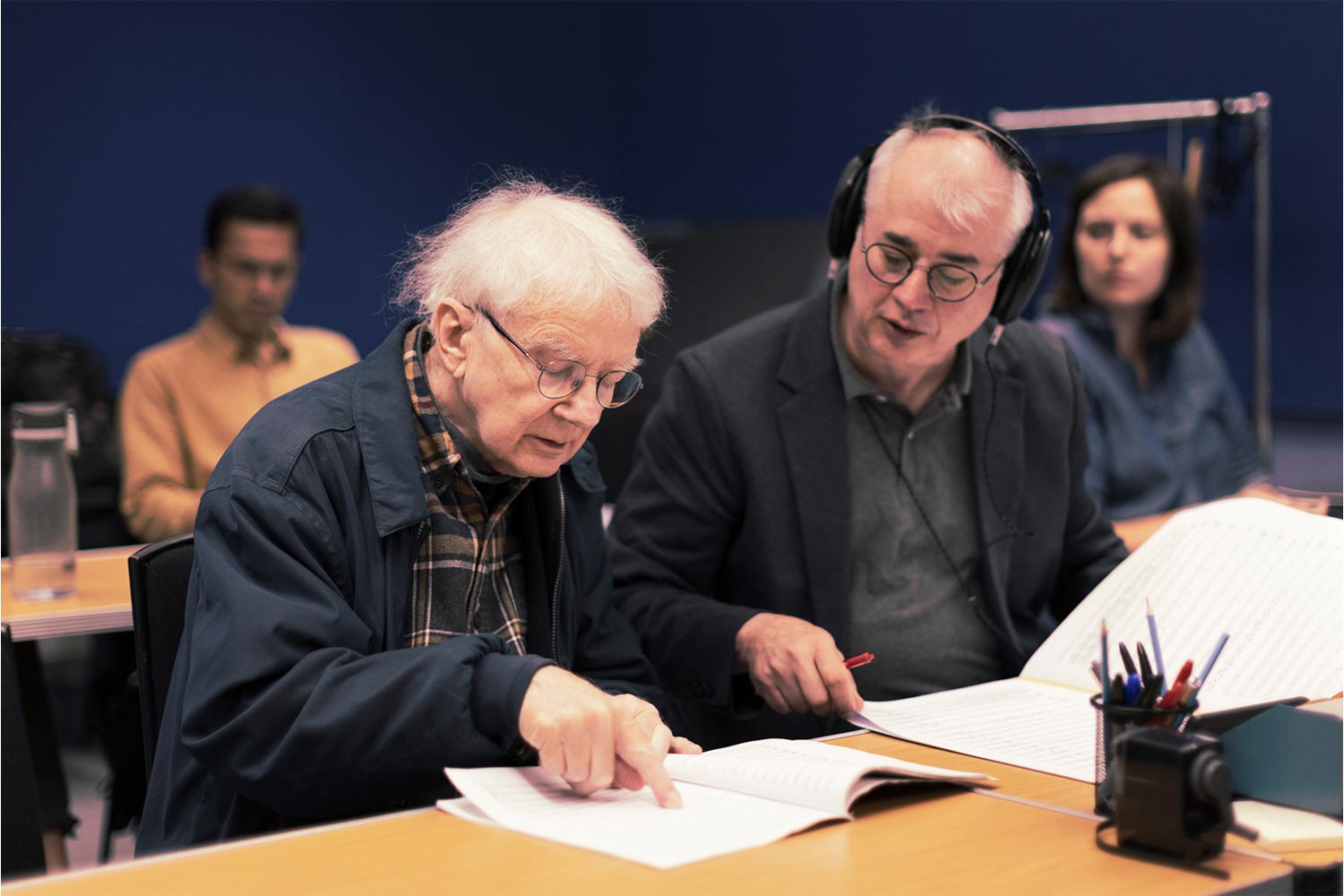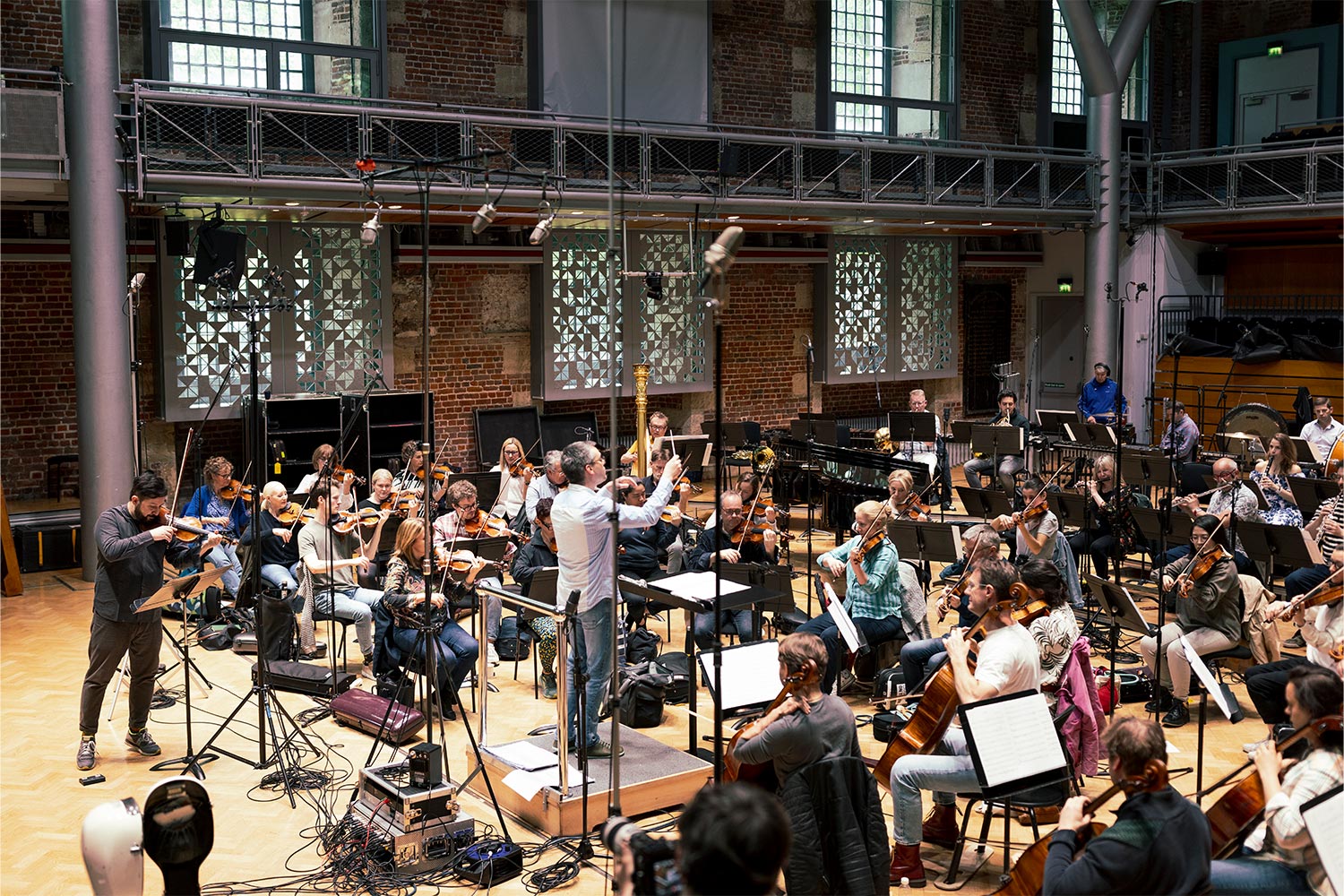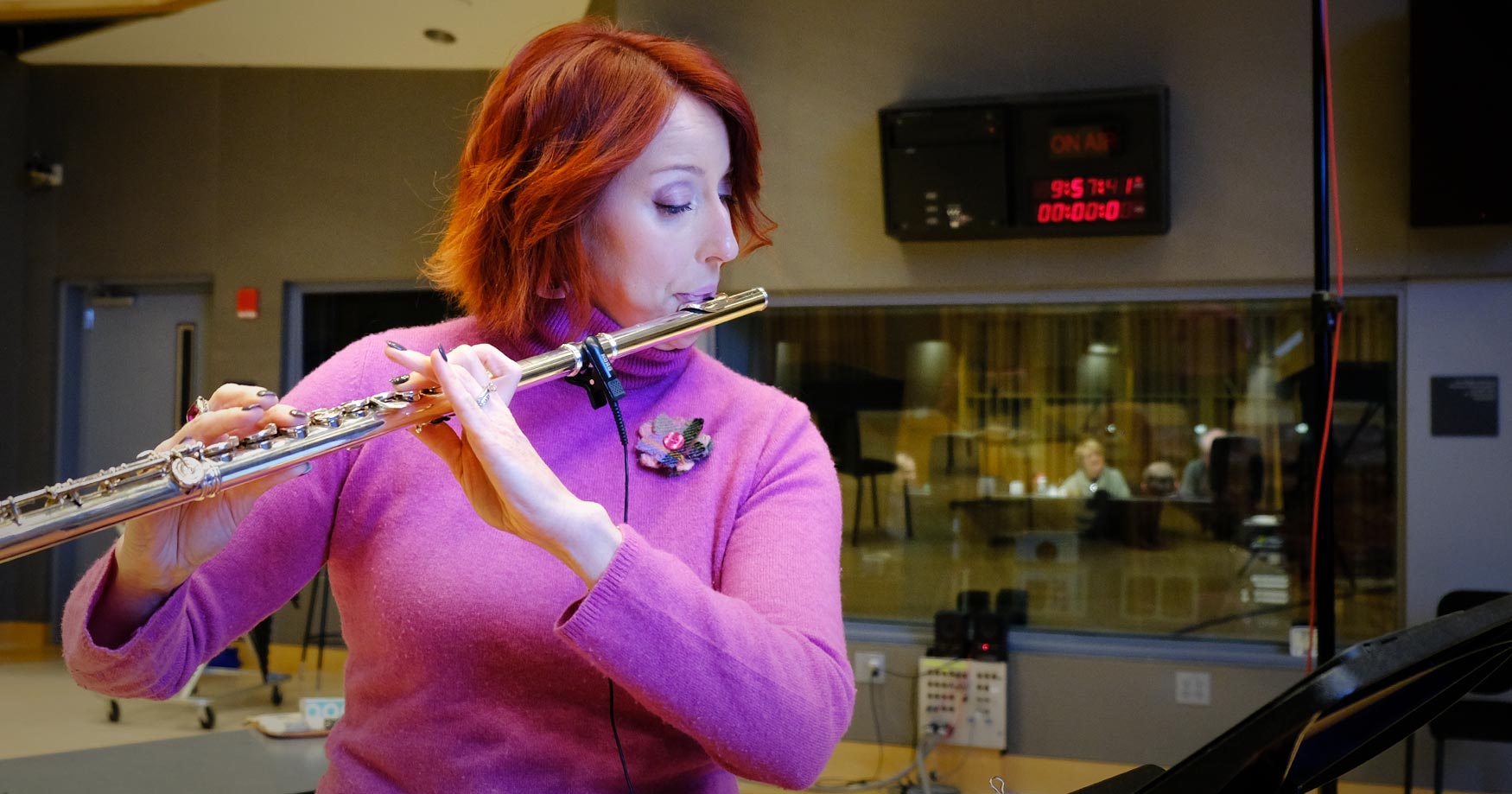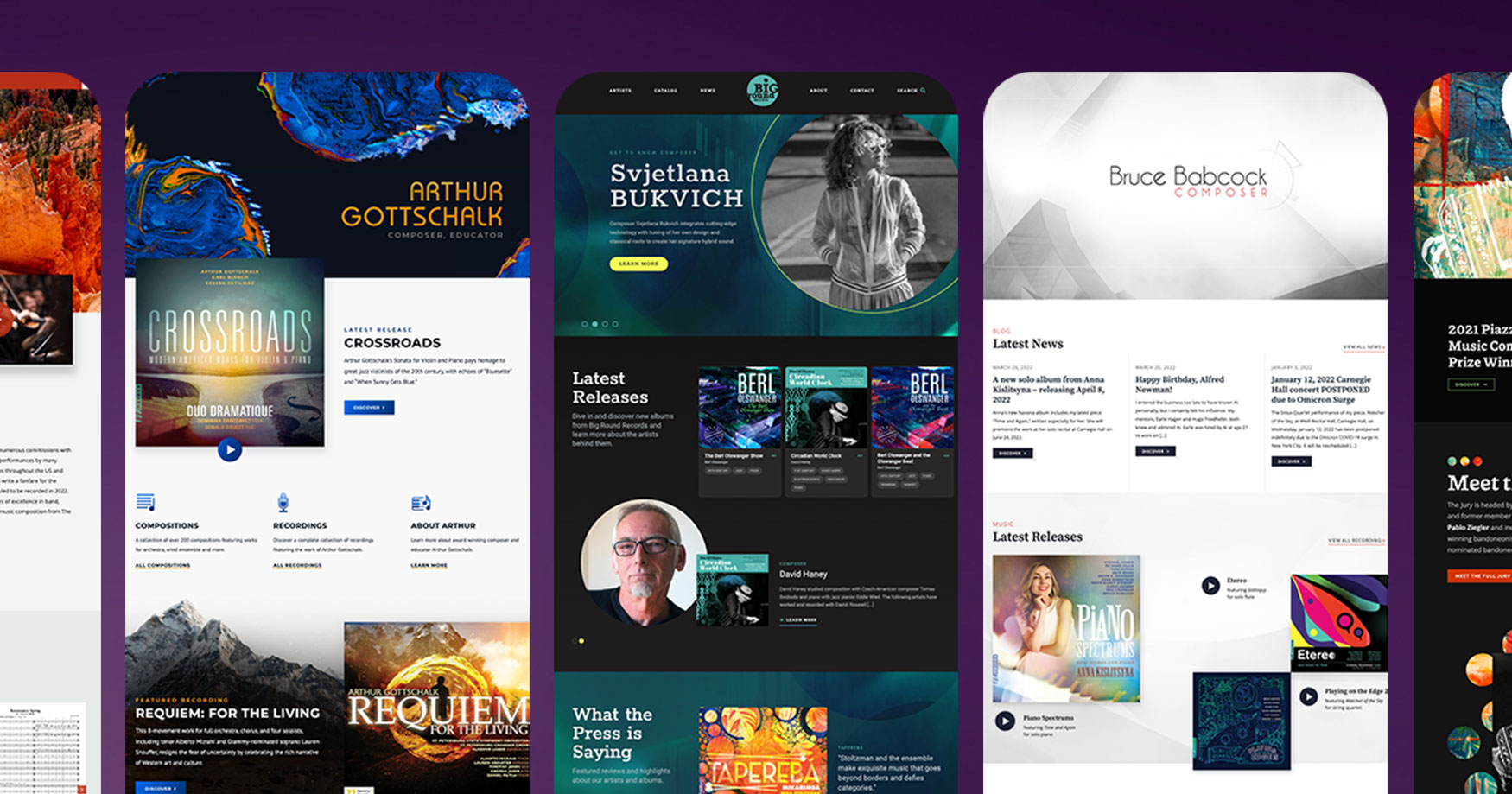For a genre that’s positively impacted listeners around the world for centuries, knowledge on how to record classical music is still a relatively new concept, and one that is continuously evolving.
We’ve come a long way from the days of the phonograph. However, capturing the authentic sound of a soloist or ensemble can still pose a few challenges — the art of recording, producing, and releasing classical music can be as complex and sacred as the genre itself.
Read on for an inside look at the current conventions and processes for recording classical music in 2024, along with some sage advice from members of PARMA’s GRAMMY®-winning production team.

Left to Right: Richard E Brown, composer, and Brad Michel, PARMA Senior Producer | credit: Benjamin Ealovega
How to Prepare for a Studio Recording Session
Whether starting from a score, a recording, or an idea, a well thought-out plan sets the tone for the entirety of a project. Developing and executing a clear, achievable, and effective studio process is highly recommended to achieve a recording that aligns with an artist’s initial intentions.
Everything from the studio you record in, to the room sounds, the musicians you produce with, and the audio engineers that facilitate the entire production will influence the outcome of your music.
Recording Studio Tip:
Assemble a team of experts to assist in the many stages of recording. There are a few key players that will contribute to a composer’s work throughout a professional recording and post-production process:
Maximizing preparation translates to a smooth, unhindered session. Make sure all instruments and musicians required to perform your music will be available the day of your recording, and that your score has been thoroughly reviewed and is ready to be brought to life.
Coordinating each of these components and finding the best-fitting team to carry out a recording session in a space that compliments the tone of your work is an art form in and of itself.
“Careful planning is crucial for any successful recording,” says PARMA Vice President of Production Jan Košulič.
“Any recording will always be only as good as the individual stages and components contributing to it. By the time you get to the session itself, a lot of key parameters should already be firmly set. Having all of these planned properly gives everyone involved the artistic freedom to let the music speak and carry the composer’s musical ideas to audiences.”

Classical Recording Session with Davide Alogna and the London Symphony Orchestra | photo credit: Benjamin Ealovega
Tips for Classical Music Recording and Production
There are several independent variables to consider when recording classical music that can influence the outcome of your masterpiece, from the quality of engraving in the score and parts to the classical musicians under the microphones, room selection, precise microphone types and placement, all the way to editing and mixing decisions in the post-production.
While having the correct ensemble or soloist for your music plays a large role, so does the choice of production team. In a setting where every second counts, an agile and knowledgeable production team that understands the nuance and vision behind your work will make all of the difference.
The recording studio is the perfect place to collaborate closely with an audio team and performers behind your project. The takes you capture here will serve as the strong foundation upon which post-production engineers will build. Attend recording sessions, either in person or remotely via streaming, and fully engage everyone in all aspects of your artistic decision-making process to make sure no detail is left out.
Recording in a world class facility can be a high-energy environment, but that doesn’t mean it should be stressful. Remember to take it all in, and enjoy the process as your music comes to life.
Recording Tip:
Whether tracking music for a soloist, chamber group, or large ensemble, recording section by section — or even bar by bar — ensures that each note is placed and played exactly as its composer intended, making a record that is as flawless as its score.
Curious how it all looks in real time? Step into the scene and get an inside look at classical recording sessions with today’s leading composers and performers in PARMA’s production recaps.
Classical Music Post-Production
A well produced classical recording can make a listener feel like they’re in the best seat in the house.
The post-production phase of a record brings engineers back to the board, where they finely comb through all of the audio captured in the session to bring out the best of a composer’s music and create a genuine and memorable musical experience for future listeners.
With a studio recording, each section of your music is captured at its prime realization and then pieced together in the editing process until a seamless recording is formed. This approach to production paired with cutting-edge techniques and time-tested methods are what bring recordings to their full potential.
“An experienced audio engineer will be able to understand your artistic vision in both musical and technical terms,” says PARMA Audio Director Lucas Paquette.
“Skilled producers and engineers will translate these aesthetic concepts into practical steps that will shape your recording. The key is to communicate your vision openly so they can bring it to life with their expertise.”
Post-ProductionTip:
Don’t feel the need to use all of the bells and whistles that come with modern editing software. The composer’s musical output and the performer’s interpretation are the stars of the show. Retaining the authenticity of a soloist or ensemble’s sound is a primary goal in post, and is a vital part of communicating the nuance of a composition and its performance.
Through consistently improving software, equipment, and technical knowledge, opportunities to connect contemporary voices in classical music with modern audio recording are widely available, revealing a path for this celebrated tradition to live on for several more centuries to come.





